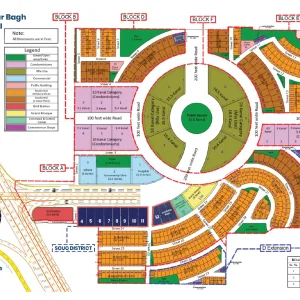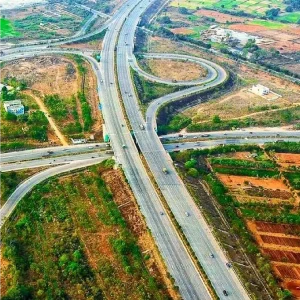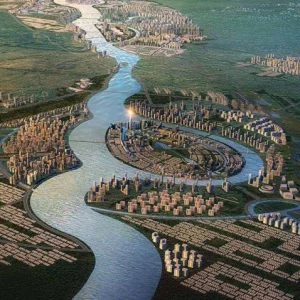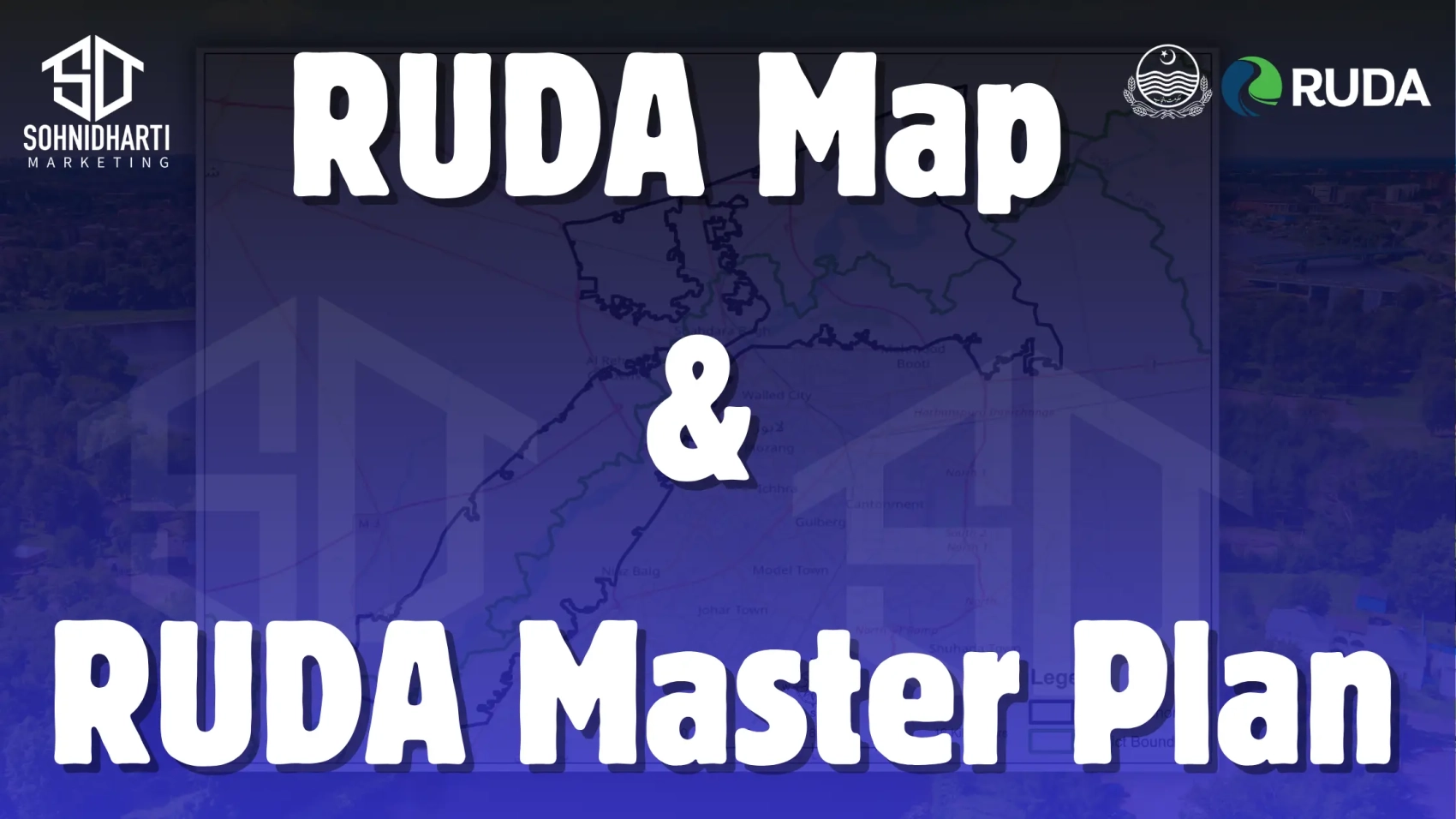RUDA Map and Ruda Master Plan
Introduction
In the heart of Lahore, a monumental urban project is taking shape: the Ravi Urban Development Authority (RUDA) is transforming a vast stretch of land along the Ravi River into a modern city. This new urban hub, built with sustainability and modern living in mind, will host millions of residents, businesses, and industries. The RUDA Master Plan is designed to offer a balanced mix of green spaces, residential zones, commercial districts, and efficient infrastructure.
If you’re wondering what this project is all about and how it will impact the future of Lahore, you’re in the right place. Let’s take a deep dive into what the RUDA Master Plan entails, how the city will develop, and why this is a game-changer for urban development in Pakistan.
What is the RUDA Master Plan?
The RUDA Master Plan is essentially a roadmap for the development of a new, sustainable city along the Ravi River. It spans over 140,000 acres and is projected to house about 10 million people. But this isn’t just about putting up new buildings. The plan focuses on creating a city that thrives on smart infrastructure, green spaces, and modern urban solutions.

From energy-efficient homes to green parks and smart public transport systems, the RUDA project is designed to be a model of how future cities should be built—sustainable, livable, and well-connected.
The Key Components of the RUDA Master Plan
1. Residential Areas
RUDA’s residential zones will cater to a wide range of housing needs, from affordable homes to luxury villas. The goal is to provide safe, modern living spaces that people can truly call home. The city will feature energy-efficient homes with sustainable materials, reducing the environmental impact while offering a comfortable and modern lifestyle.
There will also be plenty of green spaces around residential areas, ensuring that families have access to parks, playgrounds, and walking paths right outside their doors.
2. Commercial Districts
One of the standout features of RUDA’s Master Plan is the integration of bustling commercial districts. These areas will include office spaces, retail stores, and entertainment venues—think shopping malls, restaurants, and offices for startups and global companies alike. These districts will become the economic backbone of the city, providing job opportunities and fostering entrepreneurship.
But it’s not just about business—it’s about creating a space where people can work, play, and live in harmony.
3. Industrial Zones
The industrial zones within RUDA are designed to support clean, sustainable manufacturing. While the area will house traditional industries, the focus will be on minimizing the environmental footprint. Think of renewable energy-powered factories, eco-friendly logistics hubs, and advanced manufacturing processes that reduce waste and energy consumption.
This industrial growth will be key to Pakistan’s economic future, with new opportunities for skilled workers and engineers.
4. Green Spaces and Recreation
No modern city is complete without green spaces, and RUDA is putting a big emphasis on this. Imagine walking along the banks of the Ravi River, enjoying a stroll through lush parks, or cycling on dedicated paths. RUDA will include numerous parks, gardens, and recreational facilities for residents to unwind and enjoy the outdoors.
In addition to this, the city will have waterfront promenades, sports complexes, and areas for community events, ensuring that there’s something for everyone.
5. Infrastructure and Connectivity
A city isn’t just about buildings—it’s about how easily people can move around. RUDA’s infrastructure will include modern roads, bridges, and public transport systems. The goal is to make sure that traveling within the city is quick and efficient.
With plans for metro systems, bus rapid transit (BRT), and pedestrian-friendly streets, RUDA will offer the kind of connectivity that makes life easier and more convenient.
Phases of Development
The construction of RUDA will occur in multiple phases, ensuring that the city develops at a manageable pace while still meeting the needs of its residents.

Phase 1: Infrastructure Foundations
This phase will focus on the basics: roads, utilities, and essential services like water supply and sewage systems. The first residents will be able to move in as these core elements are put in place.
Phase 2: Residential and Commercial Construction
As the foundational infrastructure is completed, the next phase will focus on building residential and commercial units. Families will start moving into their homes, and businesses will set up shop in the commercial districts.
Phase 3: Green Spaces and Industry
In the final phase, RUDA’s industrial zones and green spaces will be fully developed. The city will become a vibrant community, with businesses operating efficiently and residents enjoying the parks and recreational facilities.
Why the RUDA Master Plan Matters
Sustainable Urban Growth
As urbanization increases, cities are becoming more congested, leading to issues like pollution, overcrowding, and inadequate infrastructure. RUDA is a step toward solving these problems, offering a city built with sustainability in mind. By focusing on renewable energy, green spaces, and efficient public transport, the RUDA Master Plan sets a new standard for urban development.
Economic Opportunities
The development of commercial and industrial zones will provide numerous job opportunities and attract national and international businesses to the area. This will help boost Lahore’s economy, creating a thriving, self-sustained urban hub.
Quality of Life
By integrating modern living standards with green spaces, recreational areas, and sustainable design, the RUDA Master Plan aims to improve the overall quality of life for its residents. This isn’t just about buildings; it’s about creating a balanced, livable city where people can thrive.
Challenges to Overcome
While the RUDA Master Plan promises to bring significant change, it does come with its challenges:
-
Land Acquisition: Getting land for the project in densely populated areas is no small feat. There will likely be legal and social complexities in acquiring the necessary land.
-
Environmental Considerations: Construction of large-scale projects near the Ravi River must take into account potential environmental impacts on the river ecosystem.
-
Funding: Financing such a massive project is always challenging. Securing investments and ensuring financial stability throughout the project will be crucial for its success.
Looking to the Future
The future of RUDA looks bright. In addition to the current plans, future phases will focus on incorporating even more advanced technologies, such as smart traffic management systems, AI-driven city services, and the latest in clean energy solutions.
RUDA’s focus on innovation will make it a model for cities worldwide, showing how modern, sustainable cities can be built while respecting the environment and enhancing quality of life.
Conclusion
The RUDA Master Plan is more than just a construction project—it’s an ambitious vision for the future of urban living in Lahore. By focusing on sustainability, economic growth, and quality of life, RUDA aims to set a new benchmark for cities in Pakistan and beyond.
If you’re considering being a part of this transformation, whether as a resident, investor, or business owner, the future of RUDA holds endless possibilities.

